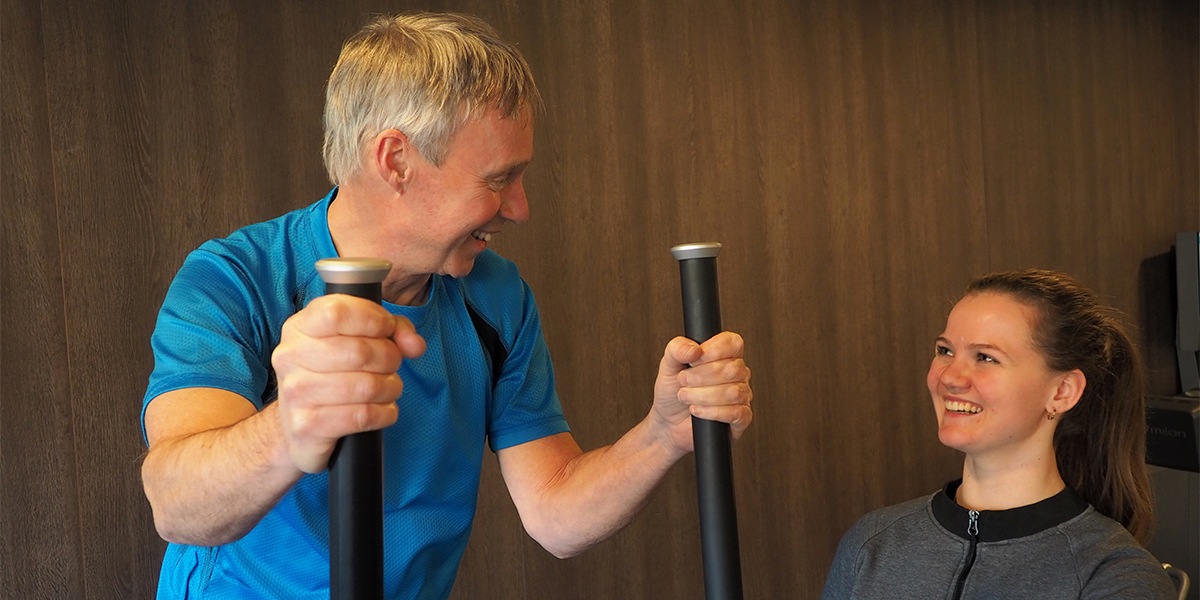That regular physical activity leads to a reduced risk of cardiovascular disease and a longer life is no longer a surprise to anyone. But is the weekly recommended amount of physical activity sufficient? A recent study shows that it could be a bit harder.
Live longer
From a recent study, recently published in the American Heart Association's journal Circulation published, shows that adults who perform two to four times the currently recommended amount of moderate or vigorous physical activity per week live significantly longer. The study monitored more than 100,000 people for a period of 30 years. The risk of premature death is 21 to 23 percent lower for people who take two to four times the recommended amount intensive exercise, and 26 to 31 percent for people who took two to four times the recommended amount moderate exercise per week.
150 minutes of moderate or 75 minutes of vigorous exercise
We already knew that regular physical activity is associated with a reduced risk of cardiovascular disease and premature death. In 2018, the US Department of Health recommended that adults get at least 150 to 300 minutes of moderate exercise per week or 75 to 150 minutes per week intensive exercise. A combination of both intensities obviously has a similar effect. Current recommendations from the American Heart Association are at least 150 minutes of moderate exercise per week or 75 minutes of vigorous activity per week.
Moving twice as much is even healthier
Researchers analyzed 30 years of mortality data and medical records from more than 100,000 adults collected during two major studies between 1988 and 2018. The participants were 63 percent female and more than 96 percent white adults. The mean age was 66 years and the mean body mass index (BMI) was 26, indicating overweight. The participants self-reported their physical activity by completing a questionnaire every two years. The publicly available questionnaires, which were updated and expanded every two years, included questions about health, physician-diagnosed illnesses, family medical histories, and personal habits such as cigarette and alcohol use and frequency of exercise. Exercise data were reported as the average time spent per week on various physical activities over the past year. Moderate activity was defined as walking, lower-intensity exercise, weightlifting, and gymnastic exercises. Intense activity included jogging, running, swimming, cycling and other aerobic exercise. The analysis found that adults who performed twice the currently recommended time of moderate or vigorous physical activity each week had the lowest long-term risk of mortality.
A number of other conclusions
- Participants who met the guidelines for intensive physical activity had a 31 percent lower risk of dying from cardiovascular disease and a 15 percent lower risk of dying from other conditions.
- Participants who met the guidelines for moderate physical activity had a 22 to 25 percent lower risk of dying from cardiovascular disease and a 19 to 20 percent lower risk of dying from other conditions.
- Participants who performed two to four times more than the recommended amount of sustained vigorous physical activity (150 to 300 minutes per week) had a 27 to 33 percent lower risk of dying from cardiovascular disease and a 19 percent lower risk of dying from other conditions.
- Participants who performed two to four times more than the recommended amount of moderate physical activity (300 to 600 minutes per week) had a 28 to 38 percent lower risk of dying from cardiovascular disease and a 25 to 27 percent lower risk of dying from other conditions.
Intensive endurance training no extra risk
In addition, no adverse cardiovascular health effects were found in the adults who reported doing more than four times the recommended minimum activity levels. This is despite previous studies finding evidence that long-term, high-intensity endurance exercise — such as marathons, triathlons, and long-distance cycling — increases the risk of adverse cardiovascular events, including myocardial fibrosis, coronary artery calcification, atrial fibrillation, and sudden cardiac death. The finding of this new study largely allays concerns about the possible harmful effect of engaging in high levels of physical activity. On the other hand, it also provides no additional reduction in the risk of death.
Maximum benefit
This study proves the importance of the right amount and intensity of physical activity throughout our lives to stay healthy. It shows that maximum benefits can be achieved through moderate to high levels of moderate or vigorous activity or a combination. People who perform less than 75 minutes of vigorous activity or less than 150 minutes of moderate activity per week can actively contribute to their health by consistently performing approximately 75 to 150 minutes of vigorous activity or 150-300 minutes of moderate physical activity. Training with the Milon circle, a fully automatic circle with fitness equipment on which you train your entire body in six 35-minute workouts every month fits in perfectly with this.
Knowing more?
Do you also want to actively contribute to your own health, but don't know where to start? With your own personal lifestyle coach you make it a lot easier for yourself. Do the free membership test and sign up for a free personal introductory meeting and tour of the club. Want to bet that you are immediately sold?
Sign up for our newsletter and receive a notification as soon as we put a new blog post online. In addition, you will receive free useful tips & tricks to achieve your health goals.


